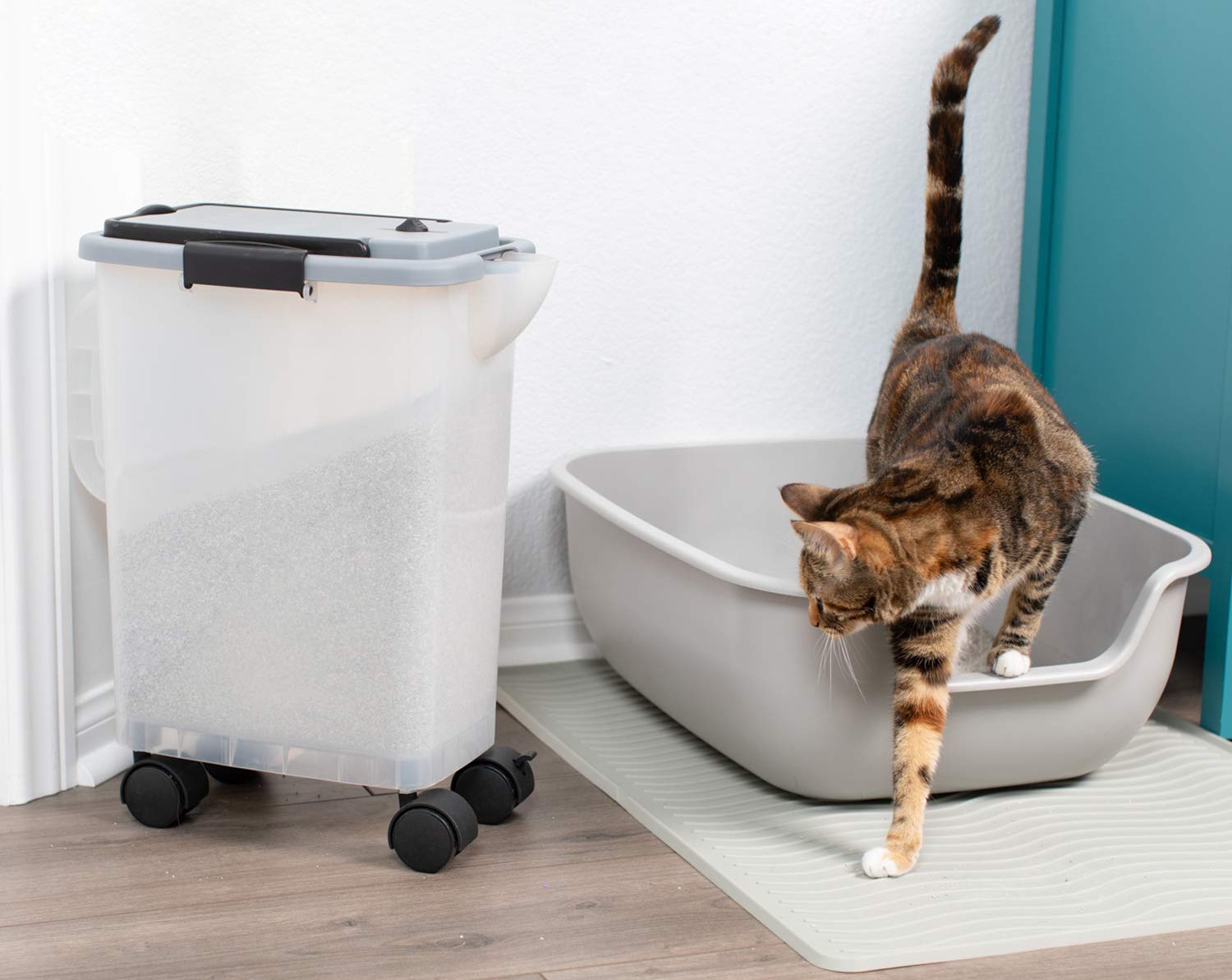

Articles
How To Store Cat Litter
Modified: August 17, 2024
Learn how to store cat litter properly with our informative articles. From storage solutions to tips on keeping it fresh, we've got you covered.
(Many of the links in this article redirect to a specific reviewed product. Your purchase of these products through affiliate links helps to generate commission for Storables.com, at no extra cost. Learn more)
Introduction
Properly storing cat litter is essential for maintaining a clean and odor-free environment for both you and your feline friend. Whether you use traditional clay litter, clumping litter, or natural alternatives, it’s important to follow the right storage practices to ensure the litter remains fresh and effective.
In this article, we will explore various aspects of cat litter storage, including choosing the right type of litter, selecting a suitable litter box, finding the ideal storage space, keeping the litter fresh and odor-free, preventing accidental spills and leaks, and proper disposal of used cat litter.
By following these tips and guidelines, you can create a convenient and hygienic system for managing cat litter, while ensuring the well-being and comfort of your beloved pet.
Key Takeaways:
- Choose the right cat litter type based on your cat’s preferences, health considerations, and environmental impact. Proper storage and disposal techniques ensure a clean and comfortable environment for both you and your feline friend.
- Select a suitable litter box, find an ideal storage space, and implement strategies to keep the litter fresh and odor-free. Prevent accidental spills and leaks, and dispose of used litter responsibly to maintain a hygienic and enjoyable environment for your cat.
Read more: How To Travel With A Cat Litter Box
Choosing the Right Type of Cat Litter
When it comes to choosing cat litter, there are several options available in the market. Each type has its own advantages and considerations depending on your cat’s preferences and your personal preferences as well.
Traditional clay litter is a popular choice due to its affordability and effectiveness in absorbing odors. It is available in both non-clumping and clumping variants. The clumping litter forms solid clumps when it comes into contact with moisture, making it easy to scoop and clean. However, clay litter can be dusty and may not be suitable for cats with respiratory sensitivities. It’s important to consider your cat’s health and your own comfort when selecting clay litter.
Another option is silica gel litter, which is known for its excellent odor control. This type of litter is made up of tiny silica crystals that absorb and trap moisture and odor. It is non-clumping and relatively dust-free, making it ideal for households with allergy sufferers. However, silica gel litter can be more expensive than other types and may not be preferred by cats who are sensitive to texture.
For those looking for more eco-friendly alternatives, natural litter made from materials such as corn, wheat, or recycled paper can be a suitable choice. These litters are biodegradable and often have minimal dust, making them safer for both cats and humans. However, it’s important to note that some cats may not readily accept the texture or scent of these litters, so it may require some experimentation to find the right option for your cat.
Ultimately, the best cat litter for your situation will depend on your cat’s preferences, any specific needs or sensitivities, and your own personal preferences. It’s important to consider factors such as odor control, dust levels, clumping ability, and environmental impact when making your decision. Taking the time to find the right type of cat litter will ensure your cat is comfortable and happy, while also making your cleaning routine more efficient.
Selecting a Suitable Litter Box
A suitable litter box is essential to provide a comfortable and accessible space for your cat to do their business. When selecting a litter box, consider the following factors to ensure it meets your cat’s needs:
Size: The litter box should be large enough for your cat to comfortably move around and dig. The general rule of thumb is to choose a litter box that is at least 1.5 times the length of your cat from nose to tail.
Accessibility: Ensure the litter box has low sides or an easy entry point, especially if you have kittens, senior cats, or cats with mobility issues. This will make it easier for them to enter and exit the litter box without any obstacles.
Covered or Uncovered: Some cats prefer privacy and may feel more comfortable using a litter box with a cover, while others may feel claustrophobic. Take your cat’s preferences into consideration when deciding between a covered or uncovered litter box.
Number of Boxes: It’s recommended to have one litter box per cat, plus an extra one if possible. This allows each cat to have a separate space for elimination and helps prevent conflicts or territory disputes.
Litter Box Placement: Choose an appropriate location for the litter box that is quiet, easily accessible, and away from your cat’s food and water. Cats prefer privacy, so avoid placing the litter box in high-traffic areas to minimize any potential disruptions.
Litter Box Maintenance: Consider the ease of cleaning and maintaining the litter box. Look for boxes with smooth surfaces that are easy to wipe or wash. Additionally, litter boxes with built-in odor control features or antimicrobial properties can help keep the area clean and fresh.
Remember, each cat may have unique preferences when it comes to litter boxes. Observe your cat’s behaviors and adjust as needed. Providing a suitable litter box will not only encourage proper litter box usage but also contribute to a clean and hygienic environment for both you and your furry friend.
Finding the Ideal Storage Space
When it comes to storing cat litter, finding the right storage space is crucial to keeping the litter fresh, easily accessible, and minimizing any potential mess or odors. Consider the following factors when selecting an ideal storage space:
Temperature and Humidity: It’s important to store cat litter in a cool, dry place to maintain its effectiveness. High humidity or extreme temperatures can make the litter clump prematurely or lose its absorbency. Avoid storing litter in areas such as garages or basements where the temperature and humidity levels may fluctuate.
Sealed Containers: To keep the litter fresh and prevent any unwanted odors, consider storing it in a sealed container. This will help contain any smells and protect the litter from moisture or other contaminants. Look for containers that are airtight and made from materials that are easy to clean and sanitize.
Accessibility: Choose a storage space that is easily accessible for you to retrieve the litter when needed. Consider the size and weight of the litter bags or containers, and ensure that the storage area allows for convenient access without any heavy lifting or awkward positioning.
Location: Select an area that is away from direct sunlight and heat sources, as prolonged exposure to these elements can impact the litter’s quality and effectiveness. Additionally, choose a location that is out of reach of children and pets to prevent accidental spills or ingestion.
Organization: Keep your storage area organized by labeling or categorizing different types of litter or accessories. This will make it easier for you to locate the specific litter you need and maintain a clutter-free space.
Consider Convenience: If possible, store the litter near the area where you typically clean and change the litter box. This will save you time and effort when it comes to refilling the litter or performing routine maintenance.
Remember to periodically check the stored litter for any signs of damage, moisture, or expiration dates. Keeping cat litter properly stored will ensure its longevity, effectiveness, and ultimately provide a more pleasant experience for you and your furry companion.
To store cat litter, keep it in a dry, odor-free area away from direct sunlight and moisture. Seal the bag or container tightly to maintain freshness and prevent spills.
Keeping Cat Litter Fresh and Odor-Free
No one wants their home to have a lingering odor of cat litter. Fortunately, there are several strategies to keep the litter box area fresh and odor-free:
Frequent Scooping: Scooping the litter box daily is essential to remove waste and prevent odor buildup. Use a quality litter scoop to remove clumps and solid waste, leaving behind only clean litter.
Clumping Litter: Consider using clumping litter, as it makes it easier to remove soiled litter and odors. The clumps can be easily scooped out, leaving behind fresh litter. Be sure to follow the litter manufacturer’s instructions for best results.
Odor-Control Additives: Some cat litters come with built-in odor-control additives. These additives work to neutralize odors, giving your home a fresher scent. Look for litters that specifically mention odor control on the packaging.
Baking Soda: Sprinkling a thin layer of baking soda at the bottom of the litter box can help absorb and neutralize odors. Be sure to mix it into the litter for maximum effect. Replace the baking soda as needed.
Air Fresheners: Consider using air fresheners specifically designed for pet odors near the litter box area. Opt for natural or pet-friendly options to ensure the safety of your cat.
Regular Cleaning: In addition to scooping, clean the litter box itself regularly. Empty the litter, wash the box with mild soap and warm water, and allow it to completely dry before refilling with fresh litter.
Litter Box Liners: Using liners in the litter box can make it easier to clean and prevent urine from seeping into the box, resulting in less odor. Opt for high-quality liners that are tear-resistant and fit securely in the box.
Adequate Ventilation: Ensure that the area where the litter box is located has proper ventilation. This will help air circulate and prevent any lingering odors from becoming concentrated in one area.
Regular Litter Replacement: Depending on the type of litter you use, it’s important to regularly replace the litter entirely. Follow the manufacturer’s recommendations and consider replacing the litter every few weeks to keep it fresh and effective.
By implementing these strategies, you can maintain a fresh and odor-free litter box area, creating a more enjoyable environment for both you and your cat.
Read more: What Is A Cat Litter Box
Preventing Accidental Spills and Leaks
Accidental spills and leaks from the cat litter can create a messy and inconvenient situation. To prevent these mishaps, consider the following tips:
Choose the Right Litter Box: Select a litter box that is deep enough to prevent litter from being easily kicked out by your cat. Look for boxes with high sides or even consider using a litter box with a top-entry design to minimize litter scatter.
Use a Litter Mat: Place a litter mat in front of the litter box to catch any stray litter that may stick to your cat’s paws as they exit the box. This will help prevent litter from getting tracked throughout your home and reduce the chances of accidental spills.
Provide Litter Box Enclosure: Consider using a litter box enclosure or furniture piece designed to hide the litter box. These enclosures often have built-in walls or doors that help contain litter and prevent spills or leaks.
Regularly Clean the Area: Regularly sweep or vacuum the area around the litter box to remove any stray litter. By keeping the surrounding area clean, you can minimize the chances of litter being tracked or accidentally spilling onto the floor.
Use Litter Box Liners: Invest in high-quality litter box liners that fit securely in the box. These liners can help prevent leaks and make it easier to clean the box, ultimately reducing the chances of spills or litter escaping from the box.
Be Mindful of Litter Depth: It’s important to provide enough litter in the box to allow your cat to dig and cover their waste comfortably. However, adding too much litter can increase the chances of spills or accidents. Aim to maintain a moderate litter depth to strike a balance between comfort and spill prevention.
Consider Litter Box Placement: Pay attention to where you place the litter box in your home. Avoid placing it near areas with heavy foot traffic or where it could be easily bumped or knocked over. Choosing a stable and secure location will minimize the risk of accidental spills.
Train Your Cat: Train your cat to enter and exit the litter box calmly to reduce the chances of litter being scattered or spilled during their movements. Proper training and positive reinforcement can help create good litter box habits for your cat.
By following these preventative measures, you can minimize the chances of accidental spills and leaks, keeping the area around the litter box cleaner and more manageable.
Proper Disposal of Used Cat Litter
Disposing of used cat litter requires careful consideration to ensure the health and safety of both you and the environment. Follow these guidelines for proper disposal:
Bagging: Scoop the used litter and waste into a dedicated litter disposal bag. Choose a bag that is durable and leak-proof to prevent any contamination or odors from escaping.
Sealing: Once the used litter is bagged, securely tie the bag to prevent any further leakage or odor. Double-bagging can provide an extra layer of protection.
Garbage Bin: Dispose of the bagged used litter in the regular garbage bin. Ensure that the bin has a tight-fitting lid to prevent access by animals or pests. Follow your local waste management guidelines for specific instructions on disposing of cat litter.
Avoid Flushing: It is important to note that cat litter should never be flushed down the toilet. Most cat litters are not meant to dissolve in water, and flushing them can cause blockages in the plumbing system or harm the environment.
Consider Eco-Friendly Options: If you are concerned about the environmental impact of traditional clay or clumping litter, consider switching to eco-friendly alternatives. Some natural litters are biodegradable and can be composted or safely disposed of in yard waste bins if permitted by your local waste management regulations.
Disposable Litter Boxes: Another option is to use disposable litter boxes made from biodegradable materials. These boxes can be easily discarded in the regular garbage, reducing the need for scooping and cleaning.
Litter Disposal Systems: There are specialized litter disposal systems available in the market that help contain odors and effectively seal and dispose of used litter. These systems provide a more convenient and hygienic solution for cat litter disposal.
Health Considerations: Pregnant women, individuals with weakened immune systems, or those with indoor cats should take extra precautions when handling and disposing of cat litter, as it may contain harmful parasites such as Toxoplasma gondii. It is advisable to wear gloves and wash hands thoroughly after handling used litter.
Remember to always follow your local regulations and guidelines regarding waste disposal to ensure proper handling and minimize any adverse impact on the environment.
Conclusion
Properly storing and managing cat litter is crucial for maintaining a clean and comfortable environment for both you and your feline companion. By following the tips and guidelines discussed in this article, you can ensure that your cat’s litter is stored appropriately, keeping it fresh, odor-free, and easily accessible.
Choosing the right type of litter and a suitable litter box is the first step in providing a comfortable space for your cat to eliminate. Consider your cat’s preferences, any specific needs, and your own preferences when making these choices. Additionally, finding the ideal storage space ensures that the litter remains in optimum condition, away from excessive humidity or temperature fluctuations.
To keep the litter box area fresh and odor-free, practice regular scooping and consider using clumping litter with odor-control additives. Utilize litter mats and maintain good ventilation in the area to minimize any accidental spills or tracking of litter throughout your home.
When it comes to proper disposal, bag and securely tie the used litter before disposing of it in the regular garbage bin. Avoid flushing cat litter down the toilet to prevent plumbing issues and environmental harm. If possible, consider eco-friendly options and follow local waste management regulations for disposal.
By implementing these practices, you can create a hygienic and comfortable environment for your cat, while also making the cleanup process more convenient and hassle-free for yourself. Remember to prioritize your cat’s health and safety, as well as the well-being of the environment, when making decisions regarding cat litter storage and disposal.
With proper storage, maintenance, and disposal techniques, you can ensure that your cat’s litter experience remains clean, fresh, and enjoyable for all. Happy cats and happy owners make for a harmonious living environment!
Frequently Asked Questions about How To Store Cat Litter
Was this page helpful?
At Storables.com, we guarantee accurate and reliable information. Our content, validated by Expert Board Contributors, is crafted following stringent Editorial Policies. We're committed to providing you with well-researched, expert-backed insights for all your informational needs.
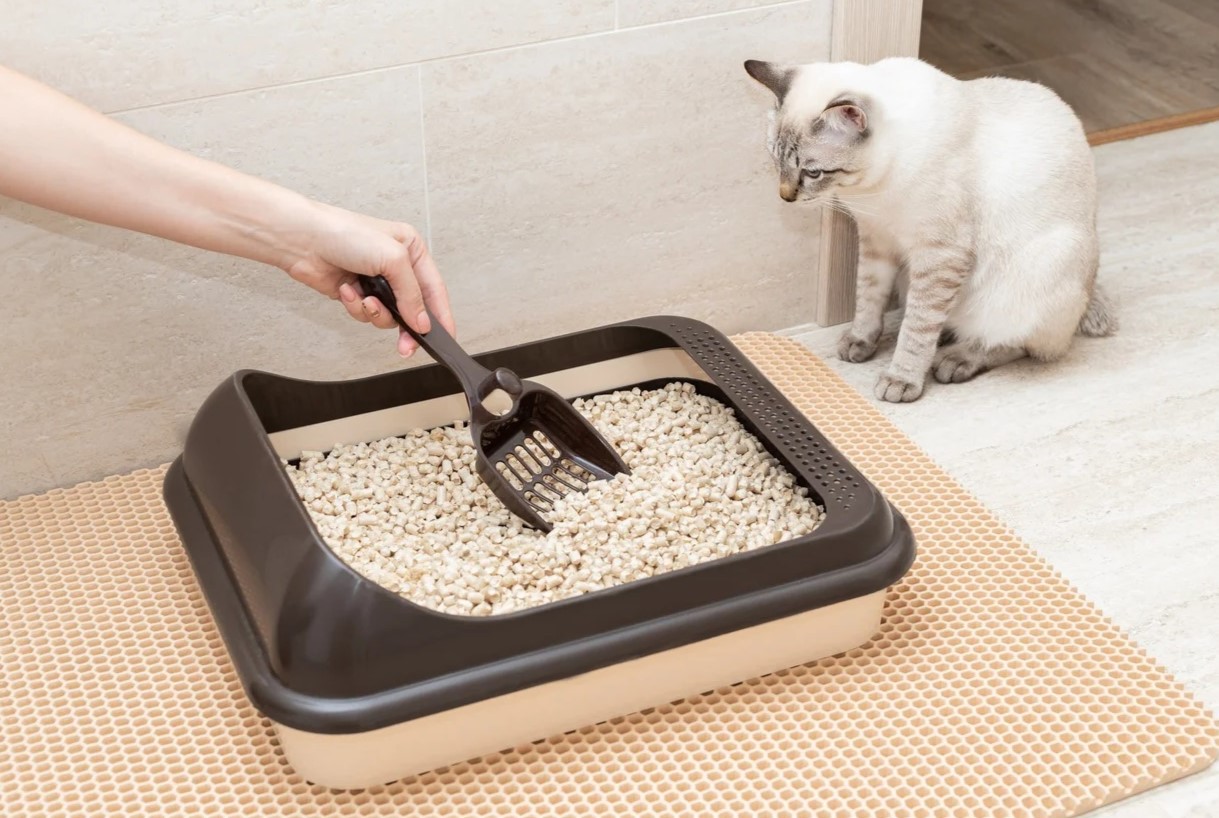

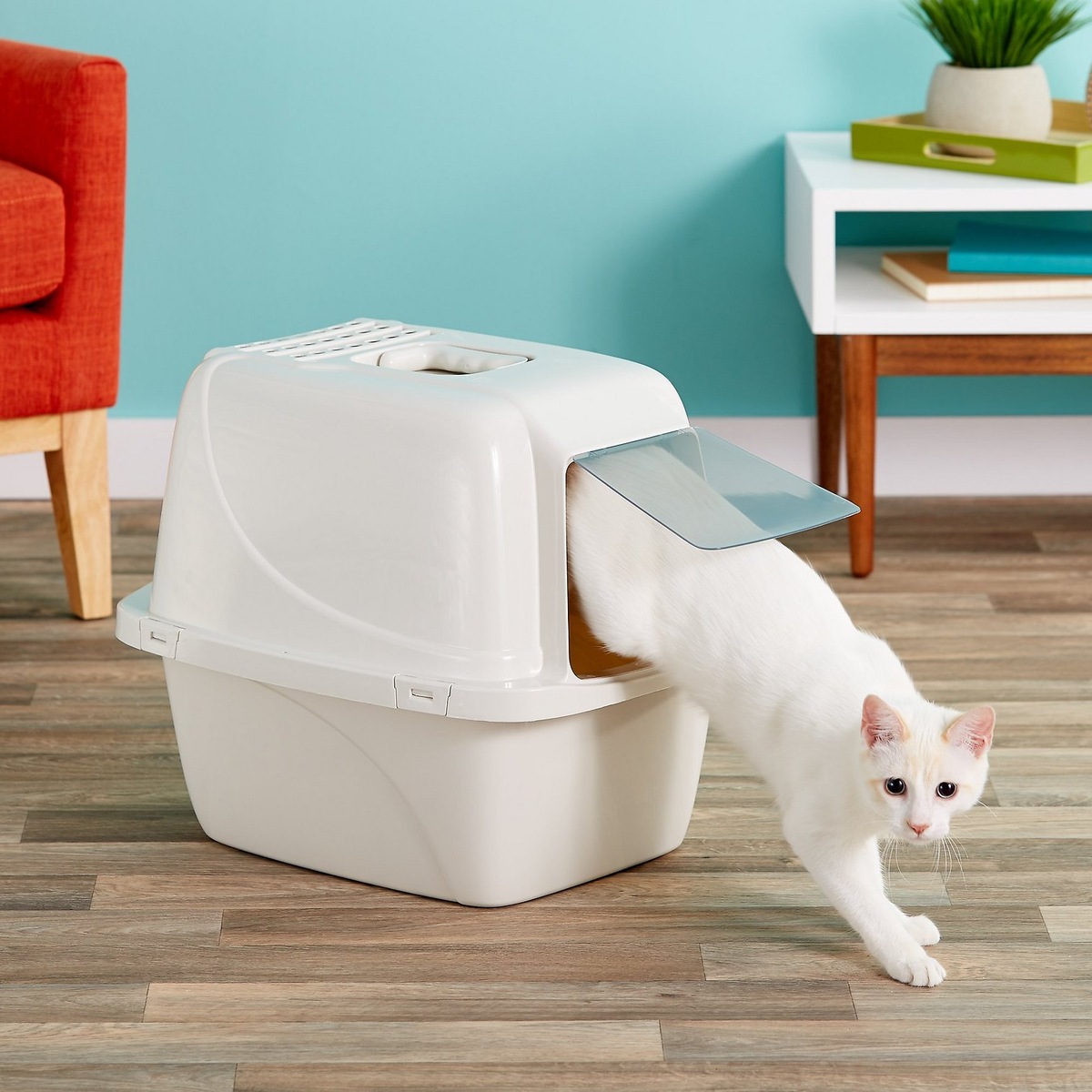
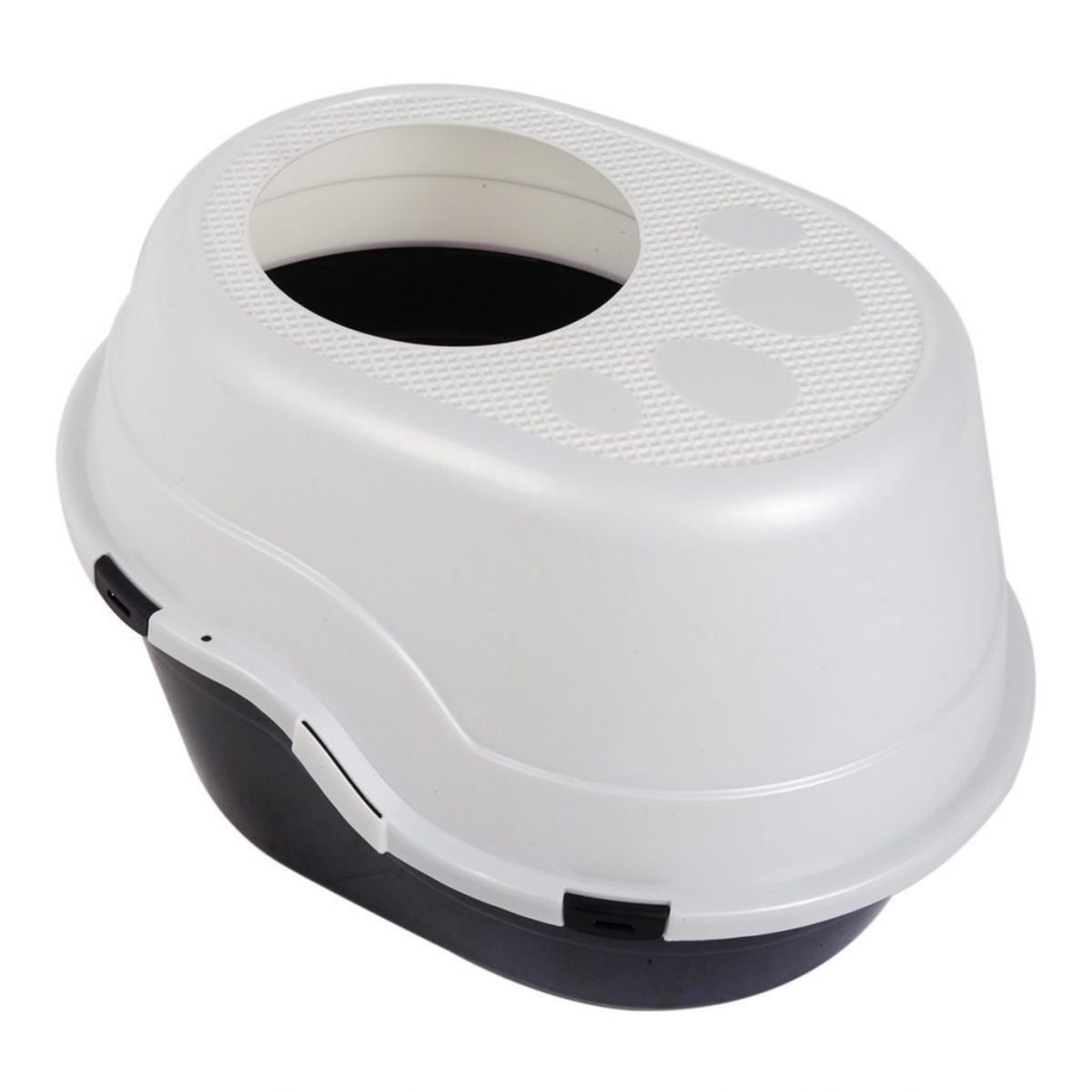

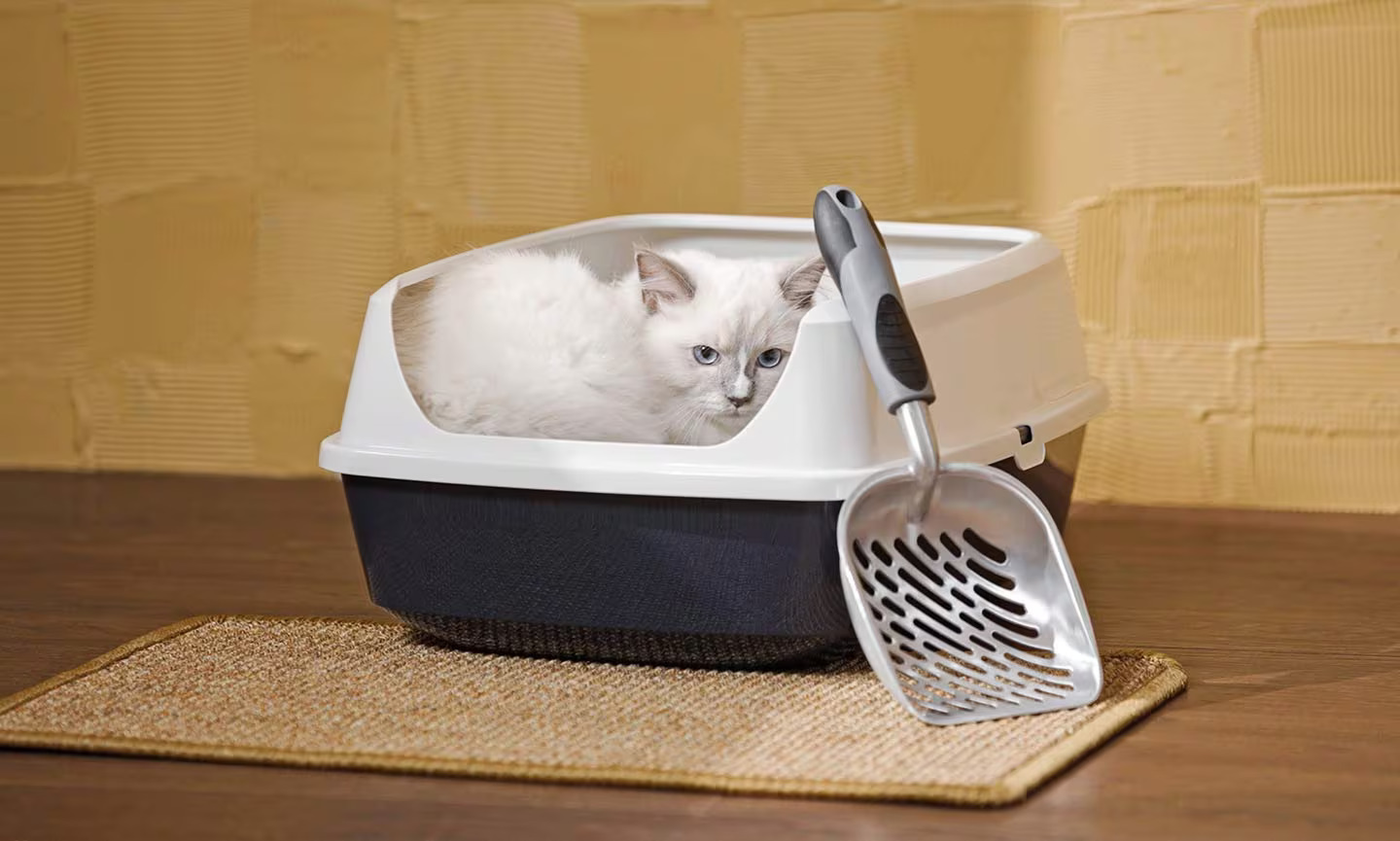
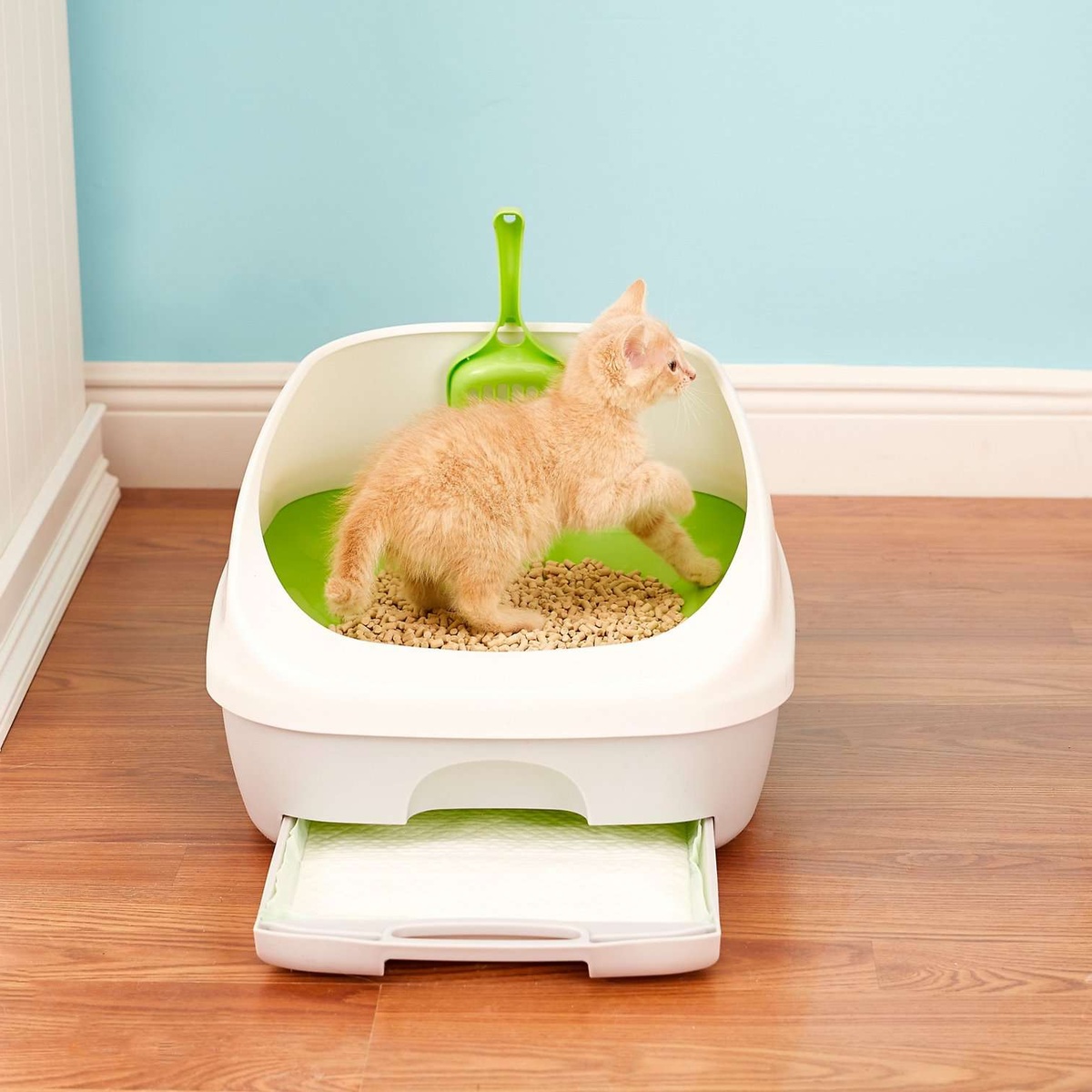
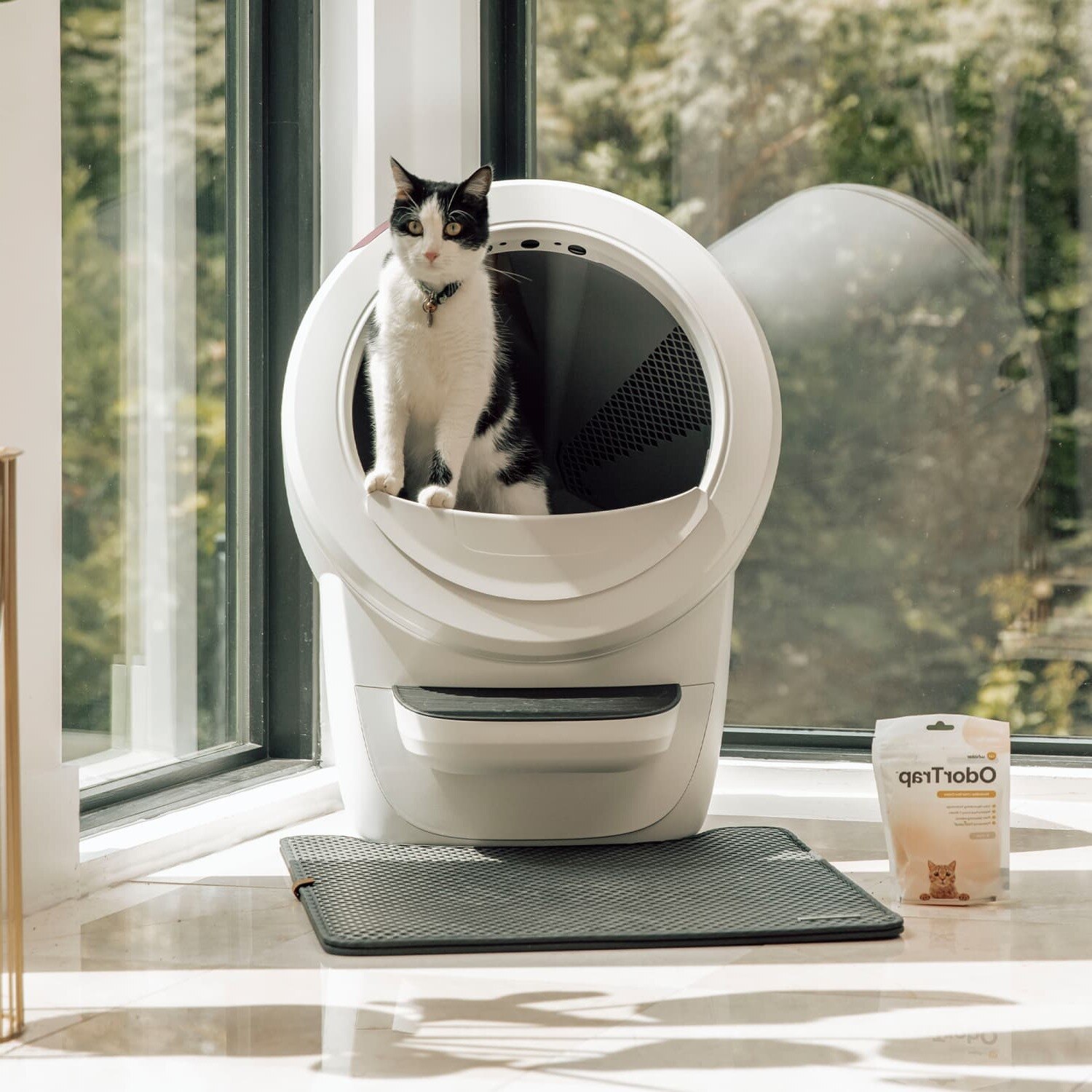
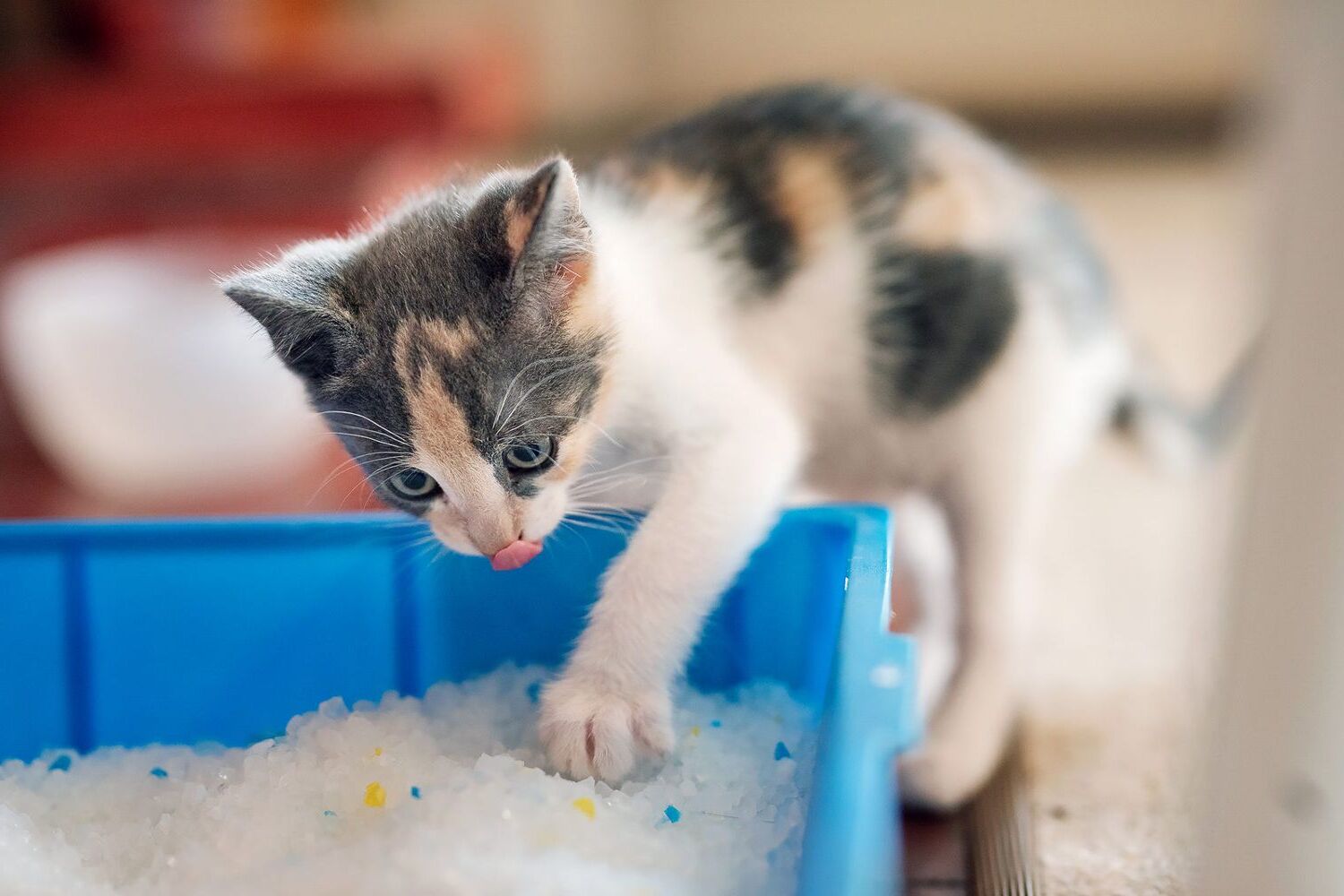
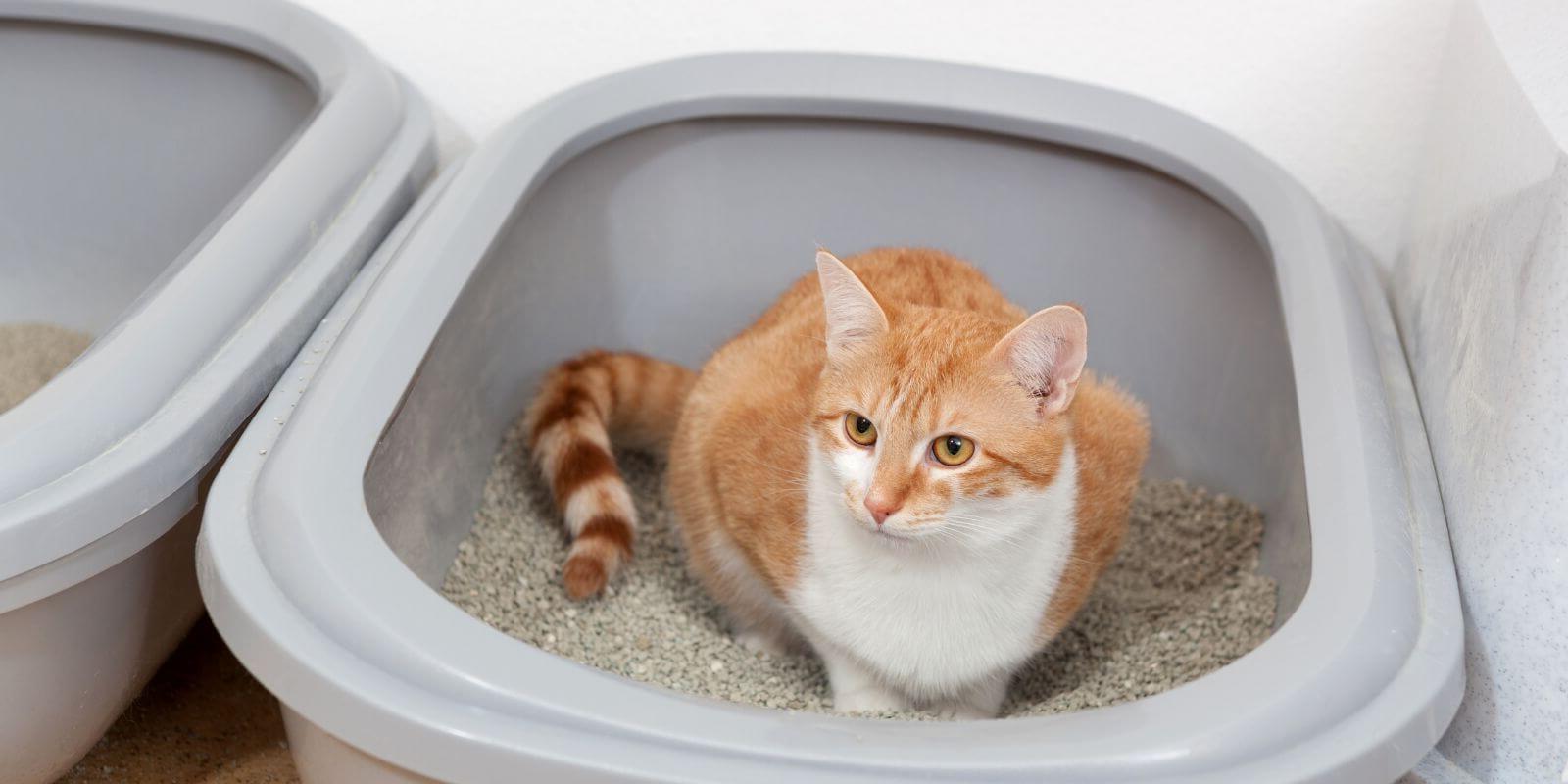
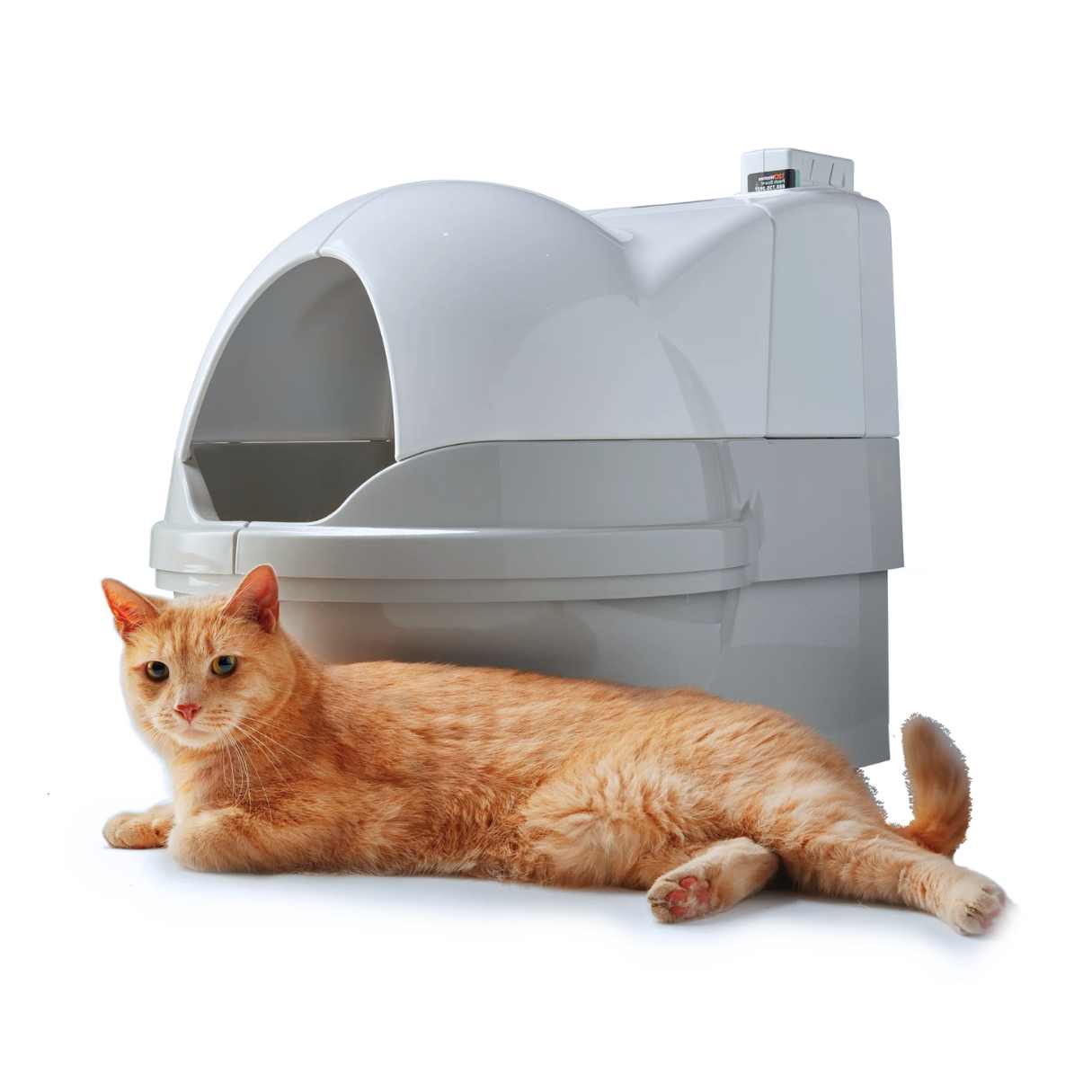
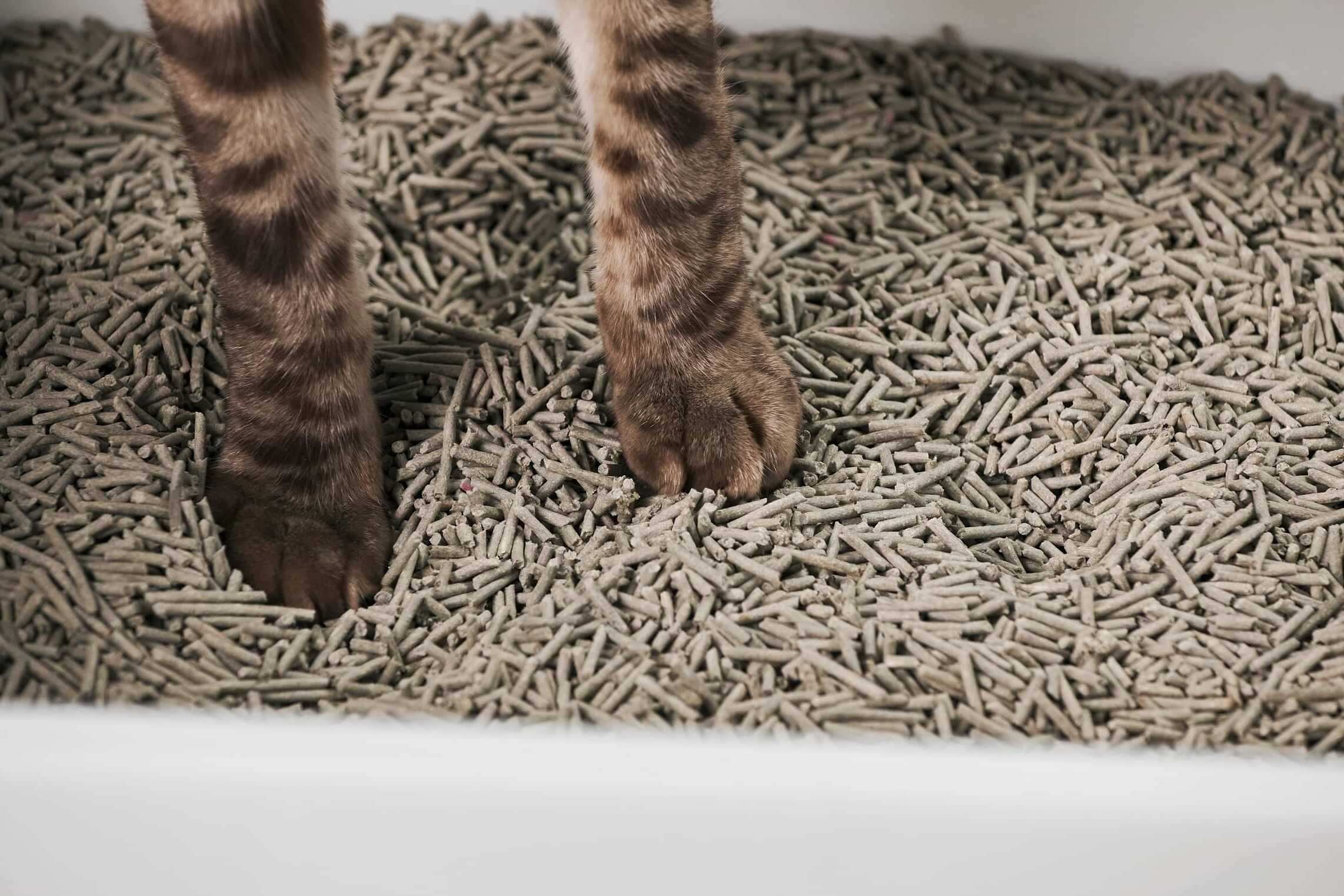
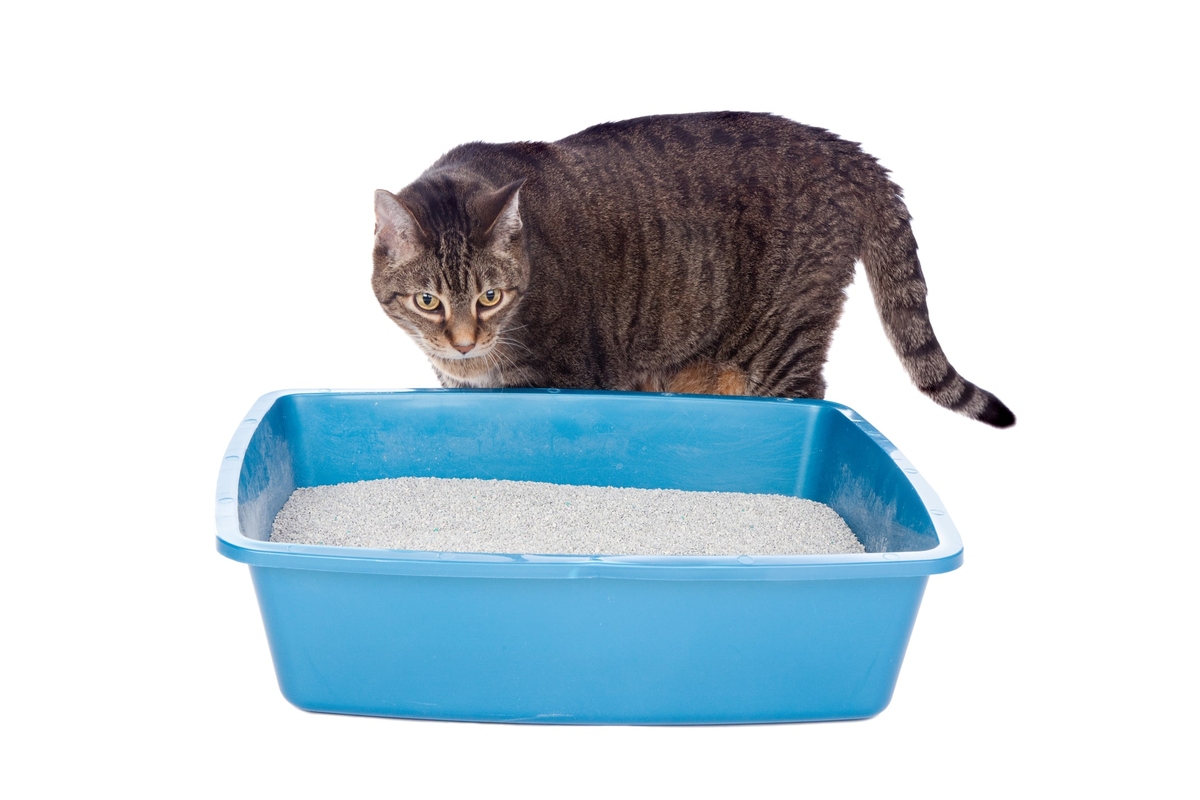
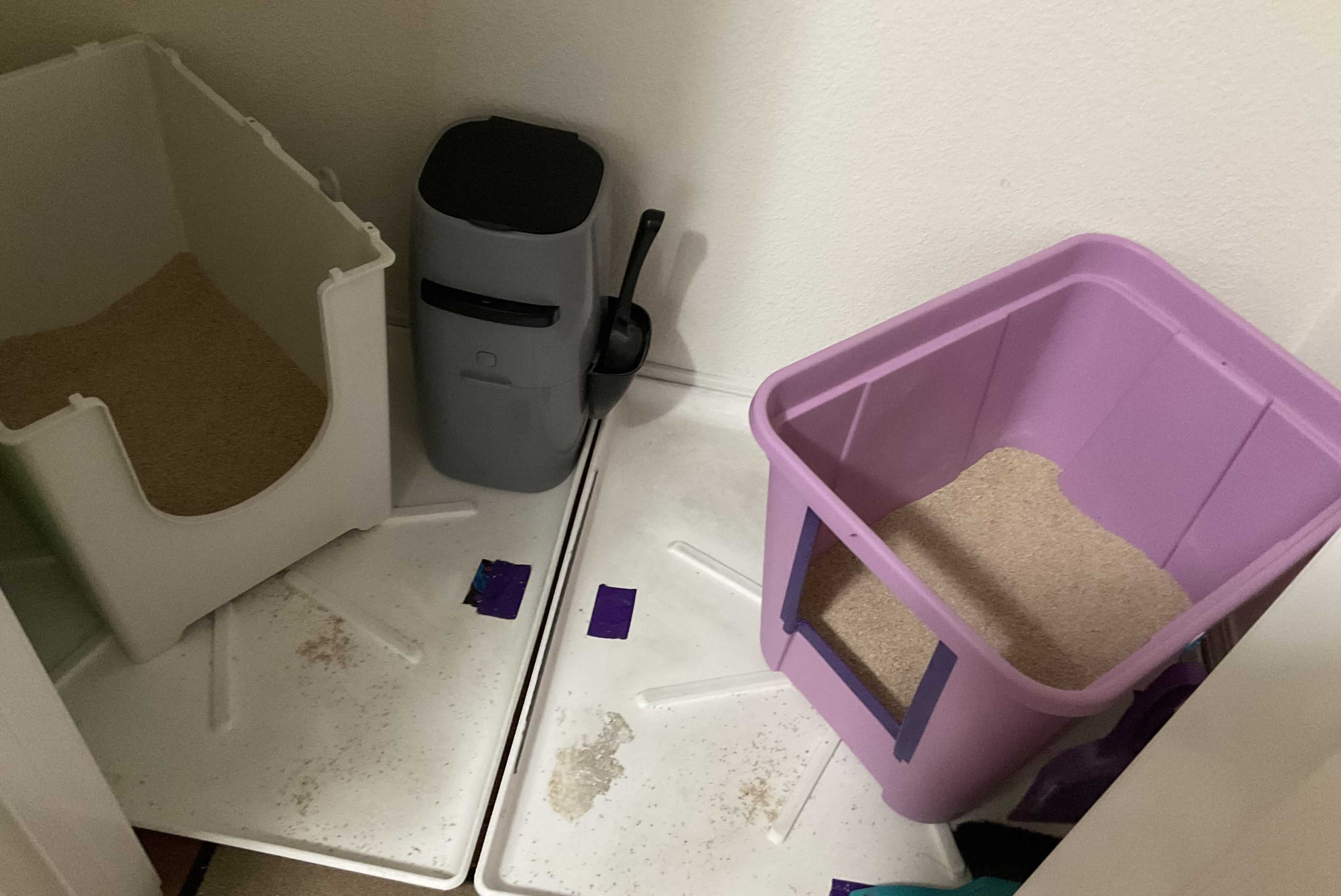

0 thoughts on “How To Store Cat Litter”